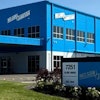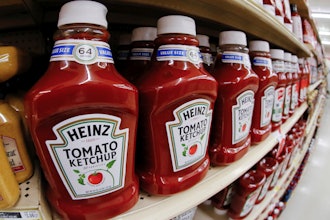Producing wholesome quality food is challenging work. In addition to designing and manufacturing creative and tasty products, a laser focus on food safety is necessary for food processing companies to survive and thrive. Effective sanitation of machinery and facilities is critical in the production of safe food products.
Sanitation In Food Production Facilities
Sanitation procedures are as varied as the food choices we have in our society. Each food production facility must evaluate the possible points where products may become spoiled or contaminated. Evaluation and procedures to guard against problems are included in a series of documents entitled Hazard Analysis and Critical Control Points (HACCP). Procedures for cleaning machinery and facilities are also included in the HACCP documents.
Machinery must be sanitized so that it is not only visually clean, but also clean on a microbiological level on a daily basis.
In a typical “ready-to-eat” meat facility, food is produced for 16 hours and then a third eight-hour shift is devoted to cleaning the machinery. The cleaning procedure includes a number of steps, such as:
- Bulk food debris is removed manually with high-pressure air or
- Equipment is pre-rinsed with hot
- Caustic foam having either basic or acidic properties is applied to the entire machine and walls of thefacility.
- Foamed surfaces are manually scrubbed as necessary to remove any observedproduct.
- Flood rinsing with warm water is used on the machinery to remove the foam and remainingproduct.
- Equipment surfaces are swabbed to test and confirm that the equipment is clean. If surfaces fail the test, all or a portion of the cleaning procedures will be repeated on thatequipment.
- Chemically active sanitizing agents are applied tothe machinery.
- Cool water is used to thoroughly rinse theequipment.
- Final tests to ensure the equipment is microbiologically clean areconducted.
- USDA inspectors verify procedures and cleanlinessof equipment.
While procedures vary depending upon the type of food being produced, these procedures are repeated on a daily basis, and any equipment used in these manufacturing areas should be purpose-designed to withstand these cleaning procedures. Electrical equipment used in these wash-down areas present a problem because of the continual use of large amounts of water, harsh chemicals and the temperature cycles that occur for electrical equipment during alternating production and wash-down periods. Even more challenging than electrical products that can be fully sealed are electric motors that require an effective seal around a rotating shaft.
Component And Material Selection
Component attributes are important for the purpose-design of electric motors in wash-down areas. The seal, cable gland and connector components used for these areas need to be selected or designed carefully. The components must endure not only incidental contact with water, cleaning agents and sanitizer, but must also be able to endure direct high-pressure spray and daily contact with these items.
Materials used in the motor body and cable jacket are important as well. For the motor body and shaft, stainless steel alloys like 316L provide excellent corrosion resistance in this environment. Coated motors or other treatments tend to flake and even degrade and become porous after a few weeks. Lower grades of stainless steel corrode, as well, and issues arise after a slightly longer period of time. Cable jacket material must withstand the caustic chemicals, the mechanical manipulation due to direct spray with high-pressure water and the constant contact with moisture and liquid without absorbing any water. Certain formulations of Thermoplastic Elastomer (TPE) work well for this purpose.
Ingress protection tests that produce IP ratings can be useful (Table 1), but do not simulate the actual wash-down environment. Equipment should be designed to endure daily wash-downs, not just a controlled test that only lasts a few minutes.
Thermal Cycles
Electrical equipment produces heat when operated. The space inside a servo motor can heat up to 140ºC (248ºF) during normal operation. When the production time is over and the machine is turned off, the temperature inside the motor rapidly declines toward the ambient room temperature, which could be refrigerated and as low as 0ºC (32ºF). The temperature reduction in a sealed space creates negative pressure or a vacuum relative to conditions outside of the motor. Measurements of up to 5.5 PSI of vacuum have been documented during this cycle, which is revived slowly by air being pulled in through the seal or cable gland (Table 1). During that time, however, the motor is being sprayed with water and cleaning chemicals that can be drawn into the motor along with the air. This vacuum needs to be released in another manner. The motor must be vented, which prevents this vacuum from developing. When a small tube is run through the motor cable to an area with clean dry air, like the control cabinet, the relative vacuum in the motor can be decreased to zero (Table 2).
Permanent Or Temporary Covers
A typical method to deal with the durability problems discussed previously is to protect the motors with permanent or temporary covers during wash-down. This appears to be good answer to the problem. If the motors are not exposed to water, cleaning chemicals and chemical sanitizers, they will be more reliable. However, the hygienic demands combined with the chaos of food manufacturing and machine cleaning make these solutions unattractive.
Permanent Covers
Two issues may arise when creating steel covers around electric motors. First, guards over the motors create dead spots or growth niches that are not easy to inspect or clean. Product can enter the permanent covers and the warm, moist environment inside the cover becomes an excellent place for pathogens to grow, multiply and then migrate to product surfaces. If the guards are removed and cleaned during the machine cleaning cycle, the motors become vulnerable to the general cleaning environment, and even with clear procedures, motors often still get sprayed while uncovered. In addition, if the covers are removed and the motors are washed-down they are likely to fail. Also, adding stainless steel covers to the machine adds cost, size and complexity to the machine without solving the underlying problem.
Temporary Covers Or Bagging
Another method of protecting motors during wash-down is to put plastic bags over them and then remove the bags after the more stringent wash-down of the machine is done, and wipe down the motors manually. The question remains, however, are the motors clean if this method is used? During a meeting of the Kollmorgen Advisory Council we asked this question of 23 leading food safety professionals. Nineteen of them had significant doubt concerning the process, and the other four indicated that it took much longer to complete the process. Also, despite detailed instructions, the bags are often not applied at all, leaving the motors vulnerable.
Covers Are Not The Answer
Ingress Protection Ratings Vs. Purpose Engineering
The International Electrotechnical Commission has established a set of testing standards (IEC 60529) for equipment (Figure 2). The IP rating that most closely simulates the wash-down environment is IP69K. The IP69K test requires that the component to be tested be placed on a turntable. High-pressure, 1,160 to 1,450 PSI, hot water 80ºC (176ºF) is sprayed through four specified nozzles placed 10-to-15 cm from the component at 0º, 30º, 60º and 90º angles.
The nozzles spray a minimum flow rate of 14 liters-per-minute as the turntable rotates for two minutes. The component must operate normally after the test, and when disassembled there must be no ingress of water into the component. While this is a rigorous test, it falls short of simulating the wash-down environment. The standard does not test in any way for corrosion caused by chemical cleaning, thermal cycles of the component during production and cleaning cycles, or the repeated daily mechanical damage that can occur during high-pressure wash. While IP ratings can be useful, selection of motors or other components that are purpose-designed to withstand the wash-down environment is a better choice for ensuring durability and continued effectiveness in wash-down production areas.
Conclusion
The best solution for applying electric motors in wash-down areas is to use motors that are purpose-engineered to withstand daily cleanings. Selecting a durable motor that is purpose-designed for the wash-down environment is imperative. The motor body and all exposed metal surfaces should be made of 316L stainless steel; a cable jacket made of a thermoplastic elastomer that can withstand the mechanical wear of high pressure wash, and daily exposure to chemical cleaning agents, without degrading or absorbing water, is also important. Shaft seals and cable glands must be designed to withstand daily wash-downs, as well. The challenge of the thermal cycles that occur during production and cleaning cycles must be effectively addressed to relieve the vacuum that occurs during the cool down cycle of the motor without inducing water or chemicals into the motor. Selecting purpose-engineered product for wash-down areas is the right path to follow to ensure continued production and decreased maintenance costs in wash-down areas.






















